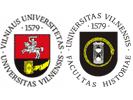The history of the Russian nobility from the second half of the 19th century to the beginning of the 20th century has received considerable attention. So far, the contribution by soviet historiography must have been the most significant. The said contribution mainly consists of research on the issues which were characteristic of the marxist school, such as class fight, studies of economic and social formation, but also political history of the elite class. However, there is always sufficient space for historians to identify new problems. It goes without saying that new research would help us expand our perception of the nobility class within the Russian empire. There has been too little research of the world-outlook, cultural activities, as well as political mentality of the nobility as a social community.
After the abolition of serfdom in 1861 and other significant reforms conducted during the rule of Alexander II, the process of unification and modernisation was started in the Russian empire. The Russian elite was deprived of part of its privileges, which had bestowed it the leading role in the society. The nobility as a political factor up to the year 1905 had been granted very limited possibilities for political expression in the state of Russia. The privileges at its disposal were not political, therefore the nobility was forced to use various indirect ways in order to manifest its position. The political individuality of the nobility was mostly expressed via decentralised class organization and the local authorities of the Russian counties (gubernija). In the second half of the 19th century the nobility was no longer the only class, mobilizing political characters who manifested different views. The elite started to gradually lose its positions in the beaurocratic machinery. In order to secure its position, the nobility decided to even more closely cooperate with autocracy.
The most important aim pursued by the Russian nobility in the period of 1861–1904 was its attempt to exert influence on the state policy by suggesting the emperors convene the institution consisting of a national scale noblemen and local authorities. The above mentioned institution could allegedly become an advisory body on the most important issues, related to class or local authorities. In the best scenario, it could even influence governmental decisions. The emperor and proponents of autocracy found such proposals unacceptable, since they could jeopardise and restrict their power. Therefore, it was only in 1896, after the consent had been granted by Nicholas II and after strict supervision by the authorities had been introduced, that “The Counsel of Nobility Leaders” was established. This body had limited competence to advise on class-related issues.
|


 dizainas ir programavimas giriaus
dizainas ir programavimas giriaus  dizainas ir programavimas giriaus
dizainas ir programavimas giriaus